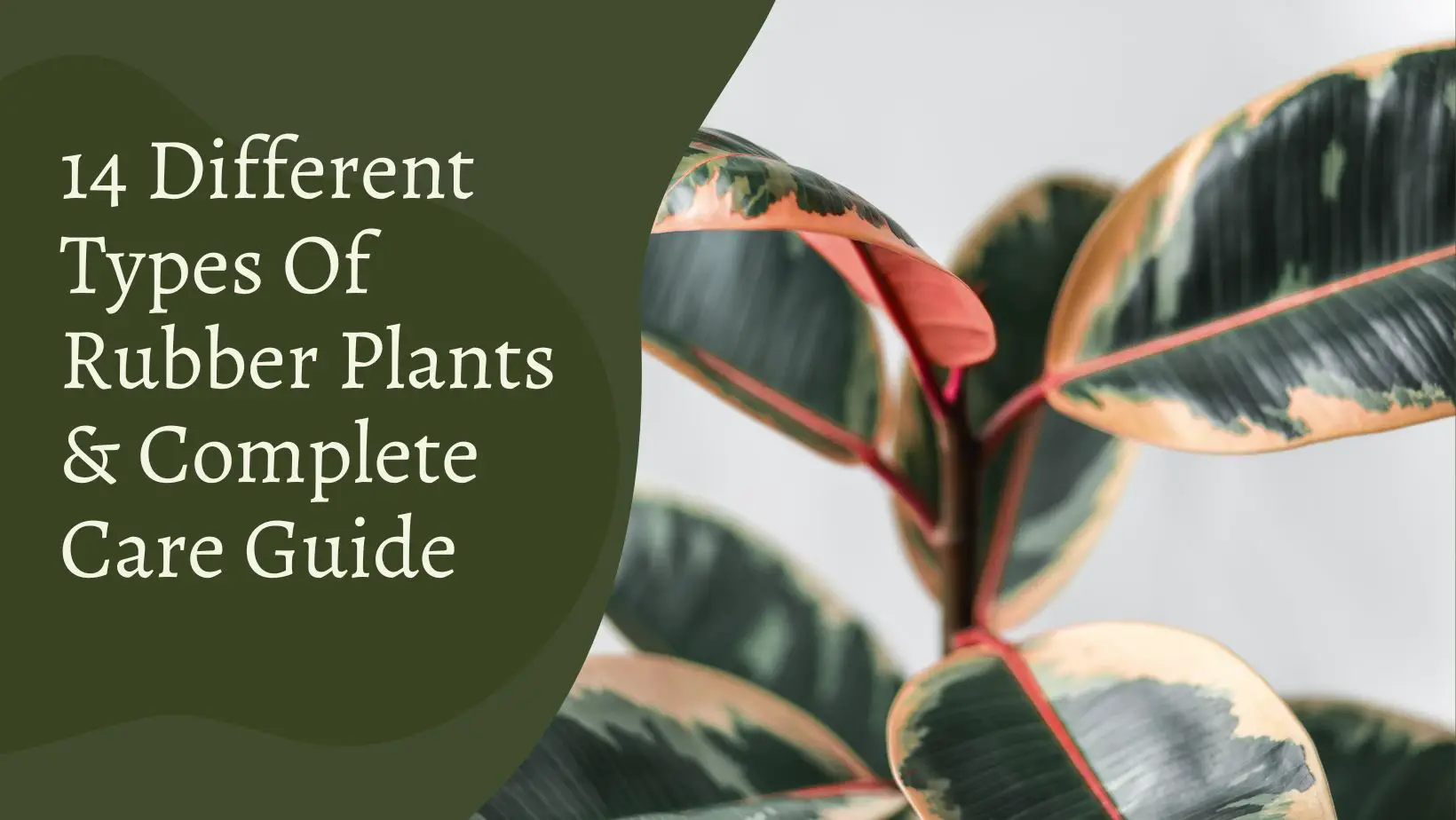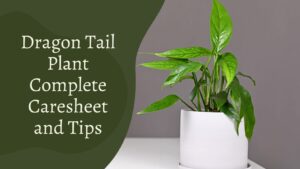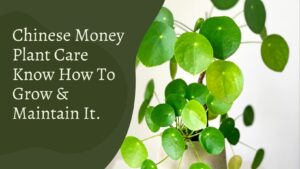
If you are looking for different types of rubber plants then you have come to right place because this article cover all the different types of rubber plants that are well known and also how to take care of rubber plant.
This plant, Indian rubber tree, rubber fig, or rubber bush is another name for the rubber tree plant. Its name comes from the latex it makes, which was used to make rubber in the past. Rubber trees are only found in the eastern parts of Southeast Asia. The species has expanded to Sri Lanka, the West Indies, and Florida, among other areas.
Ficus elastica is the botanical or scientific name for the rubber tree. The popularity of the rubber tree was most likely boosted by Frank Sinatra’s song “High Hopes.” Rubber plants may be grown in a variety of ways at home, Ficus elastica “Burgundy”, Ficus elastica “Decora”, and Ficus elastica “Robusta”.
For indoor use, Ficus elastica, the true Indian rubber plant, has been replaced with newer, more durable kinds. The “Robusta” variety, Ficus elastica Robusta or Ficus Robusta, is the most closely related to the original. Another type, Ficus Decora, differs from “Robusta” in that it has more comprehensive and broader leaves as well as a reddish-brown centre vein.
On top of that, it’s ‘whiteish’. Burgundy or ‘Abidjan’, is a dark cultivar with lovely dark leaves that are almost dark reddish-purple in color. Burgundy tends to shed leaves when exposed to colder conditions. When given, the correct well-drained potting, soil is required for the care, plenty of indirect light, and enough water.
Rubber plants, Elastica, may swiftly grow into stunning specimens. Growing and caring for a rubber tree plant is not as hard as one might think.
Ficus elastica or indoor rubber plant varieties: There are various Ficus elastica or indoor rubber plant variations. The following are some of the most well-known different types of rubber plants
- Robusta Rubber plant
- Decora rubber plant
- Burgundy Rubber Plant
- Ruby Rubber Plant
- Ficus microcarpa
- Ficus carica
- Rubber Ficus benghalensis
- ficus Benjamina (fig tree)
- Abidjan
Rubber plants are a wonderful choice for anybody searching for a low-maintenance, appealing houseplant for their home or business. This rubber tree plant is known for its bright, glossy leaves, which can give a splash of colour and personality to any space.
There are various different types of rubber plants within the rubber plant family, whether you want a bold, tropical-looking tree for your indoor garden or just a modest houseplant that is easy to care for.
- Neon Rubber Plant (Ficus Altissima)
- Red Ruby Rubber Plant (Ficus Elastica Ruby)
- Burgundy Rubber Plant (Ficus Elastica Burgundy
- Decora Rubber Plant (Ficus Elastica Decora)
- Black Prince Rubber Tree (Ficus Elastica “Black Prince”)
Black Prince Rubber Plant:
This Plant or Ficus Elastica Burgundy, has very dark green glossy leaves with a burgundy tone on the stems and undersides of the leaves. It is one of the most effective air purifiers. It is effective at eliminating pollutants from the air and can withstand low light and occasional watering.
This plant not only purifies the air within the house, but it also controls the humidity level in air-conditioned rooms. It belongs to the Ficus genus and is a popular decorative plant. One of the few houseplants that can withstand direct sunshine is this one. However, do not position it in direct sunlight from low light.
They’ll get burnt if you move them too quickly. This is a great choice for indoor growers searching for a tree-like plant with gorgeous leaves that can grow to be over 8 feet tall. It can grow to be over 30 meters tall in its natural habitat, but indoor varieties are much smaller.
The Ficus Elastica Burgundy is a tiny tree that may be grown indoors and has wide, lustrous, and elegant leaves. When it’s approximately 1–2 feet tall, A center piece on a table, shelf, or window sill looks great. When it’s taller than 3 feet, it looks great next to the TV or at the door openings.
As the plant grows taller, it’s common to stake or tie back the trunk and branches to keep them from dangling over the ground. It, like other Anthuriums, dislikes direct sunshine and can burn its leaves. Maintain a well-draining medium under strong indirect light.
It doesn’t require much attention, but keep the Amazon rain forest in mind as you do so. To thrive, this plant needs a high level of humidity. As a result, it’s best to group this plant with others in the house.
Decora rubber plant:
Decora rubber plant is an Indian and Malayan evergreen shrub or tree. The dark green leaves are thick, glossy, and leathery, ranging in length from 8 to 12 inches and width from 4 to 6 inches. Because of its larger leaves and glossier look, this variation is thought to be superior to the species.
When the leaves are young, they are bronzy. In frost-free zones, this is an excellent outdoor plant. In moderate lighting, this is a fantastic houseplant that is also very easy to cultivate.
Ficus Black Prince:
Ficus Black Prince is a Ficus Elastica cultivar that is one of the most popular in home floriculture today. Southern Indonesia, North-East India, West Africa, and Nepal provided us with this plant with such a beautiful name. In different types of rubber plants this plant also come.
Ficus Black Prince rubber plant grows to a height of 40 meters in its native country, and is consequently employed in the rubber industry.Ficus elastica Black Prince has huge, rounded leathery leaves that may grow up to 25 cm long and 20 cm broad and have a rich, dark green color.
Furthermore, the trunk and petioles are the same reddish-brown hue. The center vein is brown in color and visible on both sides of the sheet. Black Prince, like other Elastica Ficus species, prefers bright yet diffuse light. Elastica prefers temperatures of +64.4°F – +75.2°F in the summer and +60.8°F – +64.4°F in the winter.
When the upper half of the ground has dried out, watering Ficus Black Prince rubber plant is modest. In the spring, transplanting is done. Every year, young seedlings must be relocated while the pot size is increased.
Water rubber tree plants every 7-10 days in the spring and summer, and every 14-21 days in the autumn and winter. Water a rubber tree with filtered or collected rainwater. While municipal water may be utilised in an emergency, its chemicals like chlorine and fluoride render it unsuitable. These compounds may irritate or burn your plant’s roots.
Spider mite, thrips , and shield are the most prevalent pests of Ficus Black Prince rubber plant. Insecticide treatment of leaves will help you get rid of them. Diseases are primarily caused by inappropriate care: too dry or too humid soil, dry air, and frequent Ficus relocation.
Purple Rubber plant:
Purple Rubber plant While mature, the leaves are dark purple, but when young and opening, they are brilliant crimson. However, plant can also be used to cleanse interior air.
Rubber Tree Doescheri:
It has cream-white, evergreen blotched leaves with thin borders. ‘Doescheri’ is an evergreen tree with elliptic dark green leaves up to 35cm long, thinly margined with creamy-white and blotched with grey, with pink stems and midribs underneath.
Grow in full sun or moderate shade with wind protection in a frost-free environment in humus-rich wet but well-drained soil. Grow in full or filtered light under glass in a loam-based compost. Leaf-bud or semi-hardwood cuttings can be used to propagate the plant.
Ficus elastica Robusta:
Ficus has over 600 species, the most of which are tropical and evergreen, although some are deciduous, such as F. carica, the common fig. T has a peculiar “fruit” in the form of an inverted bloom. Not all Ficus species bear fruit. Tissue-cultured cuttings and plugs, air layers, micro liners (plugs) from standard cuttings, and container-grown plants with a capacity of up to 200 gallons (900 L) are just a few of the possibilities.
Elastica Ficus (elastic fig) A straight middle stem characterises a Robusta. A 45-degree tilt to the main stem gives it dark green oval-oblong leaves up to 15 inches (35 cm). Rubber plants do well in low light, therefore they are ideal for living rooms. Indoor Ficus like being moved outside in the summer. He dislikes draughts. Normal summer and winter irrigation should be mild.
There are a lot of Ficus plants that can handle being over or under watered, which makes them great for new gardeners. You should mist your ficus on a regular basis so that it doesn’t get too dry and die. Air-root and root-over-rock bonsai techniques work well with ficus, as do a variety of other types.
It is possible to grow ficus in different sizes to create bonsai, but the species with little leaves are the most effective when it comes to miniature bonsai.
Pruning different types of rubber plants:
Leaf pruning is a method used to reduce the amount of leaves on a plant. It is one of the easiest plants to root from cuttings, but the specifics for each species vary. If your garden is already full of young Ficus plants, it might be worth experimenting with the cuttings in the soil.
Ficus cuttings with large diameters may be able to grow, no matter how big they are. Putting on air layers is also a very simple way to do it. Seeds can be used to grow Ficus, but it needs a lot of heat and humidity to grow, and it can get mould.
Repot them every two to three years, but some may grow so swiftly that you may need to repot them every year. With adequate after-care, Ficus may be repotted at any time of year. The roots may easily be cut in half. Certain Ficus will shed their leaves if they are overwatered or given inadequate light.
Complete care guide for different types of rubber plants:
Temperature and humidity for different types of rubber plants:
These plants are susceptible to chilly draughts, much as other species of Ficus trees. Plants that are unhealthy will become leggy, with extending internodes, and their leaves will become yellow, brown, and eventually fall off. Rubber trees thrive at temperatures ranging from 60 to 75 degrees Fahrenheit, with a moderate amount of humidity. Despite the fact that there aren’t as many rubber plant leaves on a tree as Ficus Benjamina, their size allows them to hold a large amount of water.
Watering for different types of rubber plants:
A rubber tree’s top soil layer has to be watered when it becomes dry. Allow enough water to flow from the drainage hole before watering the plant. Moreover, make careful to drain the water from the saucer beneath the plant after the soil has drained. This will aid in the prevention of root rot. Rubber tree plants require only a small quantity of water to thrive. Soak the soil with filtered water before it dries fully, letting the excess moisture to drain. Water rubber tree plants every 7-10 days in the spring and summer. In the fall and winter, water them every 14–21 days. Water a rubber tree with filtered or rainwater. In an emergency, tap water can be utilised, but the chlorine and fluoride in municipal water make it unfit to drink. It could hurt or even kill your plant’s roots if you use these things. To prevent stunning the plant with ice-cold water or scorching the roots if the water is too hot, make sure it’s at room temperature.
Light requirement for different types of rubber plants:
Rubber plants, like the majority of their species, thrive in bright, diffused light. They can withstand gentle morning sunshine but should be moved out of full sunlight in the afternoon to avoid singeing the leaves. Plants that don’t get enough light become leggy, lose their bottom leaves, and their leaf color dulls instead of becoming glossy and vivid.
Soil:
Rubber plants aren’t finicky about the type of soil in which they grow. Many indoor gardeners prefer a cactus mix, but any decent, fast-draining potting soil would usually suffice. Rubber plants also like a soil that is acidic. They eat their soil, just like fiddle leaf fig trees, which they look like. One day, their roots will be found.
Fertilizer:
Only fertilize the rubber tree plant throughout the growth season. During the spring and summer, once a month, use a water-soluble plant fertiliser. Fertilizer for houseplants at half strength works great. When they’re in good health, they eat a lot. Some experts advise merely mildly feeding indoor plants to avoid them straining and getting root-bound as a result of their rapid growth.
Repotting Different types of rubber plants :
For repotting different types of rubber plants use a commercial houseplant soil to repot, and a little more peat moss wouldn’t harm. Remove the top growing tip to induce branching, and new shoots will sprout and branch out of the rubber plant. Rubber plants develop quickly in ideal circumstances.
Move them every year until they reach the correct height. Larger plants might be difficult to repot, so scrape out a few inches of potting medium and replace it with new potting soil if you can’t move the container. Wet the soil well after repotting a rubber tree plant for the first time.
Allow time for the soil to settle and the water to completely drain. If necessary, add extra potting mix to the container. Then go to water as normal.
For repotting this indoor tree in the most efficient manner, follow these guidelines.
- If the roots of rubber tree plant start to peep through the drainage hole, should consider repotting it.
- Moreover, wait till spring to repot the plant if find its roots creeping out over the winter.
- Repotte Ficus elastica in a container that is one inch larger than the previous one.
- In order for Ficus elastica to grow, it will need to be repotted. However, if a smaller tree, it may keep it tiny by keeping it in its smaller container.
Propagating different types of rubber plants:
![]()
Therefore, rubber plants can be grown via leaf-tip cuttings, but it’s not easy and it’s usually faster to just buy a potted plant instead. If you’re taking cuttings, make sure to utilize a rooting hormone and keep high humidity and lots of heat in mind. However, if they don’t reproduce easily, don’t be disheartened.
It’s a time-consuming and inexact science. If you’re growing from cuttings, keep the soil a little more moist than usual until new roots start to grow. Continue watering as normal if you’re spreading via air layering.
- New rubber plants may be readily propagated via tip cuttings and air layering.
- Take a 3- to 5-leaf tip cutting. Dip the bottom in root one powder to speed up the rooting process.
- Plant the tip or cutting in a moist soil with plenty of peat moss. Keep the potting mix moist and maintain a high degree of humidity around the cutting.
- Start tip cuttings in a plastic bag or a soda bottle to maintain a high humidity level.
- In around 3-5 weeks, roots should start to develop.
- Once roots develop, continue to grow normally with enough lighting and watering.
Conclusion:
I have been collecting different types of rubber plants. The rubber plants in my backyard are a diverse collection of various varieties. However, Growing rubber plants has been a hobby of mine for a very long time. Rubber plants are really attractive and would make a lovely addition to any yard.Gardening and raising my own plants are two of my favorite pastimes. I hope you found my blog about rubber plants to be interesting. Please leave a remark in the comment section below.

Hi This is Maria, We are a team of gardening enthusiasts with a passion for gardening. We have tried to bring you tips and advice enabling you to grow and maintain a healthy and beautiful garden. We Hope You Find it Useful.







